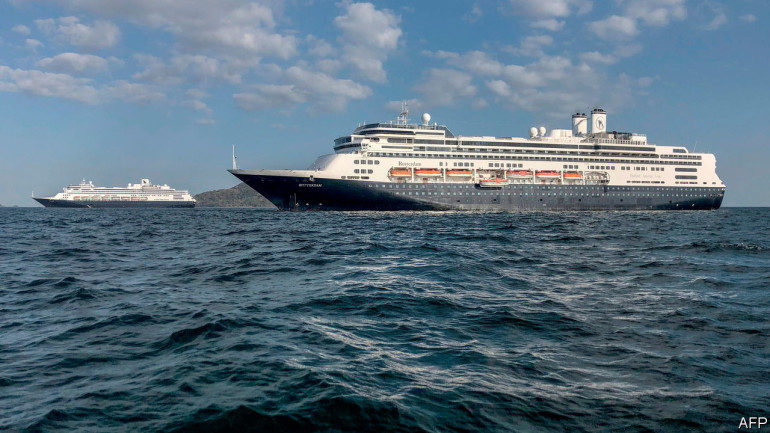Sponsored Listings:
Cruise Lines International Association (CLIA), which represents 95% of global ocean-going cruise capacity, announced today the adoption of mandatory core elements of a strong set of health protocols to be implemented as part of a phased-in, highly controlled resumption of operations. A critical next step, now that initial sailing has begun effectively with strict protocols in Europe, is the resumption of operations in the Caribbean, Mexico and Central America (the Americas), which encompass the largest cruise market in the world. Informed by leading scientists, medical experts, and health authorities, the core elements are the product of extensive work by CLIA oceangoing cruise lines and their renowned teams of science and medical experts, including the recommendations from the Healthy Sail panel established by Royal Caribbean Group and Norwegian Cruise Line Holdings Ltd. released today, as well as MSC’s Blue Ribbon group and Carnival Corporation’s collection of outside independent experts. Other considerations included the effective protocols developed for the successful sailings in Europe by MSC Cruises, Costa, TUI Cruises, Ponant, Seadream, and others. The CLIA Global Board unanimously voted to adopt all of the listed core elements for an initial restart of limited operations in the Americas and, most important, operations related to U.S. ports. These core elements will be continuously evaluated and adjusted against the current state of the COVID-19 pandemic, as well as the availability of new prevention, therapeutics, and mitigation measures. Coinciding with the release of the core elements agreed to by CLIA ocean-going cruise line members, the Association issued the following statement:
Guided by world-class experts in medicine and science, CLIA and its ocean-going cruise line members have outlined a pathway to support a phased-in, highly-controlled return to passenger service in the Caribbean, Mexico and Central America with protocols that promote the health and safety of passengers, crew and the communities visited. The core elements mirror the successful resumption of cruising in other parts of the world and include 100% testing of passengers and crew prior to boarding — a travel industry first. Initial cruises would sail on modified itineraries under stringent protocols that encompass the entirety of the cruise experience, from booking to debarkation. With support and approval of regulators and destinations, cruises could feasibly begin during the remainder of 2020.
The core elements, which are applicable to CLIA member ocean-going cruise ships subject to the Center for Disease Control and Prevention (CDC) No Sail Order, will also be submitted by the Cruise Lines International Association (CLIA) on behalf of its members in response to the CDC’s Request for Information (RFI) related to the safe resumption of cruise operations. CLIA’s response to the RFI also details other measures that address the entire cruise experience from booking to disembarkation.
Highlights include:
- Testing. 100% testing of passengers and crew for COVID-19 prior to embarkation
- Mask-Wearing. Mandatory wearing of masks by all passengers and crew on board and during excursions whenever physical distancing cannot be maintained
- Distancing. Physical distancing in terminals, onboard ships, on private islands and during shore excursions
- Ventilation. Air management and ventilation strategies to increase fresh air onboard and, where feasible, using enhanced filters and other technologies to mitigate risk
Medical Capability: Risk-based response plans tailored for each ship to manage medical needs, dedicated cabin capacity allocated for isolation and other operational measures, and advance arrangements with private providers for shoreside quarantine, medical facilities, transportation.
Shore Excursions: Only permit shore excursions according to the cruise operators’ prescribed protocols, with strict adherence required of all passengers and denial of re-boarding for any passengers that do not comply.
Implementation of these elements onboard every oceangoing ship subject to the CDC’s No Sail Order is mandatory and requires written verification of adoption by each company’s CEO. These elements do not preclude additional measures that may be adopted by individual lines. Measures will be continuously evaluated and adjusted against the current state of the COVID-19 pandemic, as well as the availability of new prevention and mitigation measures.
CLIA President and CEO Kelly Craighead said, “We recognize the devastating impact that this pandemic, and the subsequent suspension of cruise operations, has had on economies throughout the world, including the nearly half a million members of the wider cruise community and small businesses in the Americas who depend on this vibrant industry for their livelihoods. Based on what we are seeing in Europe, and following months of collaboration with leading public health experts, scientists, and governments, we are confident that these measures will provide a pathway for the return of limited sailings from the U.S. before the end of this year.”
According to CLIA’s most recent Economic Impact Study, cruise activity in the United States supported over 420,000 American jobs and generates $53 billion annually in economic activity throughout the country prior to the pandemic. Each day of the suspension of U.S. cruise operations results in a loss of up to $110 million in economic activity and 800 direct and indirect American jobs. The impact of the suspension has been particularly profound in states that depend heavily on cruise tourism, including Florida, Texas, Alaska, Washington, New York and California. For more information about the cruise industry’s response to COVID-19, including a fact sheet outlining some of the key categories of protocols being considered and the progress of the disciplined approach to cruise resumption in Europe, please visit the CLIA COVID-19 Resource Page or contact the CLIA media relations team at press@cruising.org.
Source: travelnewsdigest.in










